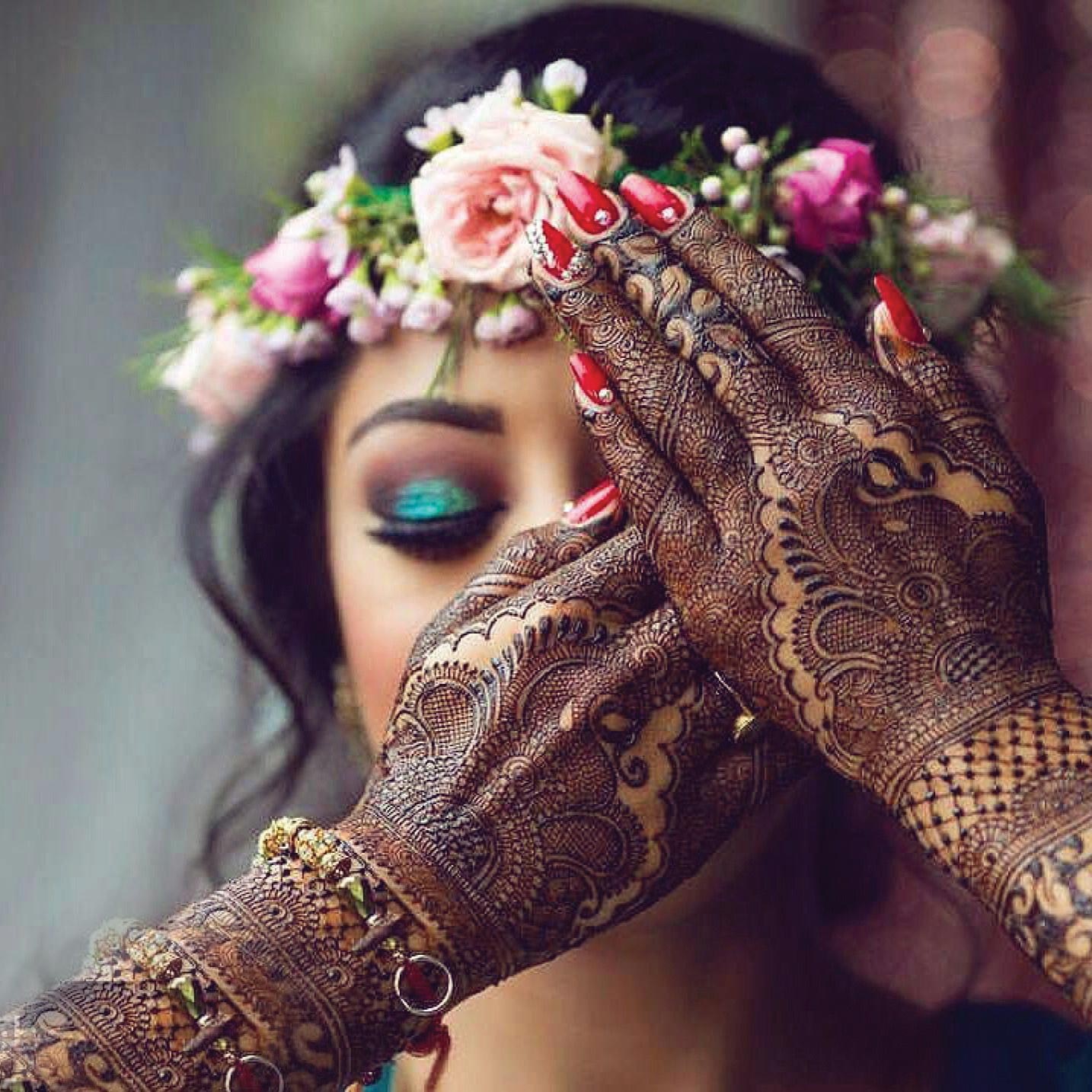Mehndi, or henna painting, is a mysterious and elusive art form. From the deserts of North Africa to Northern villages of Pakistan, magnificent designs blossom and vanish upon the hands and feet of women, as they have for thousands of years.
The application of henna is evident from the times of Mughals who arrived in India during 16th Century. Court documents record henna ceremonies and adornment of women with henna applied on hands and feet. There are visual records of dipped fingers, stained hands and elaborate patterns on arms using this beautiful red dye.
Some researches argue henna originated in ancient India while others claim it was brought to India by Egyptian moghuls in the 12th century C.E. Still others will contend that the tradition of applying henna to the body began in the Middle East and North Africa in ancient times.
The plant
The word Henna has its origin in the Arabic word Al-Hinna. The plant grows to be 4 to 8 feet high in hot climates and can be found in Iran, Pakistan, Syria, Persia, Morocco, Palestine, Yemen, Egypt, Uganda, Tanzania, Afghanistan, Senegal, Kenya, Ethiopia, Eritrea, and India. The leaves, flowers and the twigs of the plant are ground into fine powder containing natural dying properties called tannins; the powder is then mixed with hot water.

The Designs
-
- Arabic henna designs are abstract and less dense with designs featuring graceful, usually large, Floral and vine patterns on the hands and feet.
- Pakistani designs involves fine, thin lines for lacy, floral, paisley patterns with lines and dots; dense patterns covering entire hands, forearms, feet and shins.
- African henna patterns, usually simple, bold, large geometric shapes and designs with abstract symbols.
- Non-traditional design tends to be a mix of all of the above and is more personalized per individual. One might like a particular portion of any design infused with another meaningful symbol such as pentagrams or Chinese characters.


Colour Variations
Various shades are procured by mixing henna with the leaves and fruit of other plants, such as indigo, tea, coffee, cloves and lemon. The resulting paste is often used as a hair dye. During hot weather, henna acts as a cooling agent when applied to the palms of the hands and the bottoms of the feet. When used in decorative body art, sugar and oil are also added to the mixture to strengthen the color and longevity of design.
Amazing facts
- Archaeological research indicates henna was used in ancient Egypt to stain the fingers and toes of Pharaohs prior to mummification.
- The Queen of Sheba decorated her hands with henna on her journey to meet King Solomon.
- In the Arab world, henna has symbolized love, sensuality and good luck for over 5000 years.
- In Jewish traditions, Henna is believed to ward off the evil eye. In these cultures, it is believed that it is harder for the evil eye to find its way to the bride’s forehead, if the design patterns are more intricate.
- In Moroccan rituals, the patterns drawn with henna are viewed as a talisman. These patterns consist of crosses, triangles and diamonds, known as el ain, and are considered to defend the person from the evil eye.

